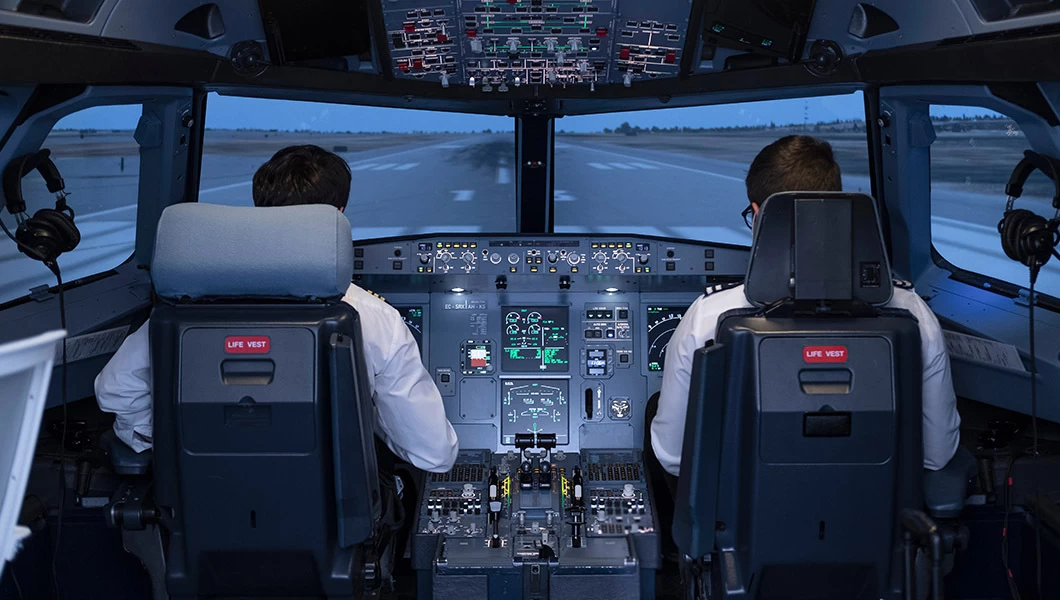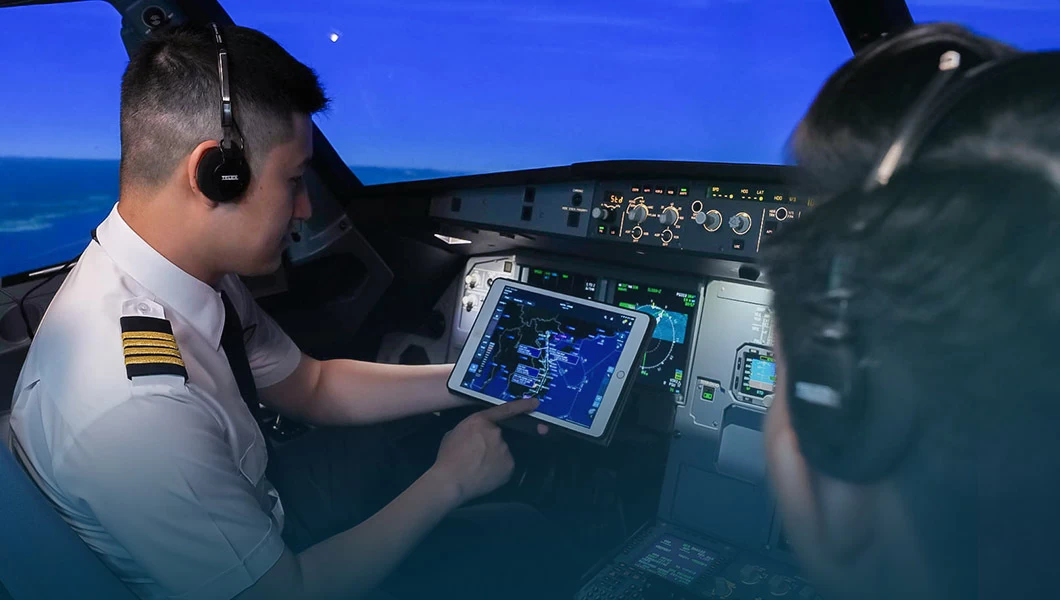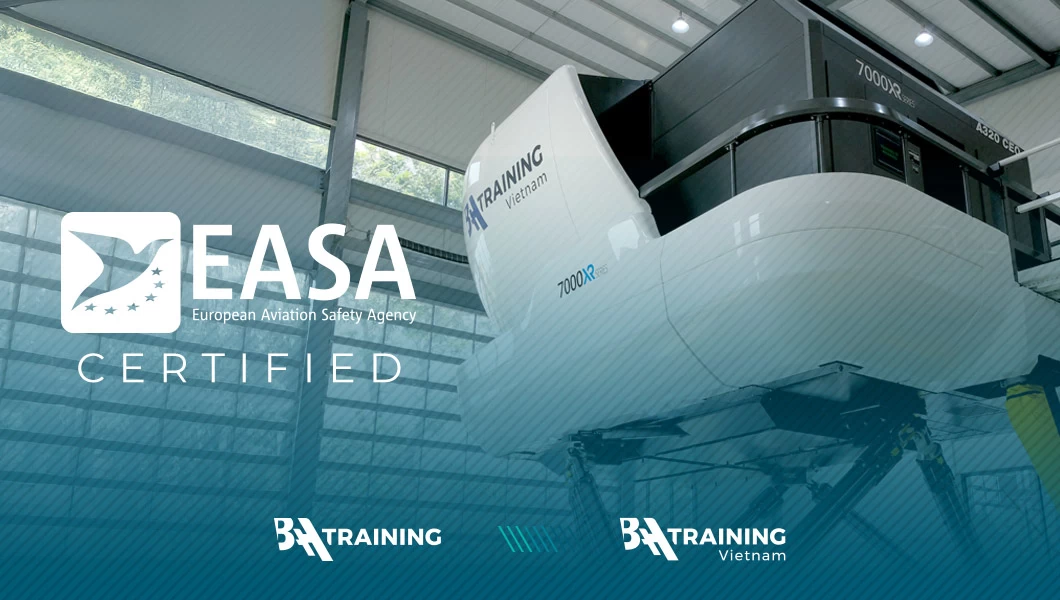Alongside the development of technology, the constant transmission and improvement of knowledge has been essential to these rapid advances, and central to all of this is one key area: pilot training.
Prefer to listen? Press play to hear this article.
But where do the origins of aviation training lie? What did the first flight schools in history look like? And what can we learn from the evolution of flight training to make flying safer today?
Answering questions like these requires a deeper look into pilot training history, charting a course through its military origins before taking in some of the technological developments that have enabled its evolution. Only then can we understand the full story behind what makes today’s pilot education systems so comprehensive, and how they produce such skillful pilots.
How Were Pilots Trained in the Past?
No sooner had the Wright brothers descended from their first flight in December 1903 than others began to ask, “Can I try?” Despite obvious enthusiasm, the early years of aviation history were a free-for-all – a mishmash of hobbyists and amateurs, with nothing in the way of standardization or safety.
This changed in the years that followed. Imperial College London, for example, offered proper theoretical instruction through a course in aeronautics as early as 1909, while the University of Paris instructed students on aerodynamics in 1910.
What little evidence there is of practical pilot education in this period suggests an altogether less comprehensive curriculum. Indeed, when the U.S. Army purchased a plane from the Wright brothers in 1909, “a little over three hours’” training was given. While being among the earliest (and shortest!) pilot lessons in recorded history, this episode is significant for another reason: it represents the first evidence of the link that the military would continue to have with the evolution of flight training.
The Role of the Military in the Development of Pilot Training
World War I

The potential of aviation soon became clear around the world, and the race was on to capitalize. The German Institute for Experimental Aviation was set up in Berlin in 1912, for example, while the University of Michigan in the U.S. offered a 4-year program in aeronautical engineering in 1914.
Alongside academic interest, military advantages of air support became clear after the onset of World War I. This necessitated the training of a new generation of pilots to make use of rapidly evolving aviation technology, as a result of which the UK established the Royal Naval Air Service Training Establishment, Cranwell, in 1916. At the tail-end of the war, the Royal Air Force itself was then set up to continue the development of pilot education.
Despite pilot training being taken more seriously in this period, there was still an absence of clear training guidelines or curricula. Instead, pilot training around the world essentially involved putting new pilots in a room with experienced flyers and having them share their experiences. In-flight training was as simple as having a tutor sit behind a pilot and offer them instruction – so much for crew resource management!
World War II
With the benefits of a strong air force clear to all by now, steady progress continued in the inter-war years, albeit hamstrung by the harsh economic climate. As a result, the next great leap forward only came after the outbreak of World War II.
To illustrate the seismic impact that the war had on pilot education, we can again look at the military. In 1937, only 184 pilots graduated from advanced air training in the U.S. Army Air Corps. By the end of World War II, however, over 250,000 had graduated from the Army Air Forces Training Command.
This period also represents the beginning of what we would now recognize as a more professional approach to training pilots. In the U.S. Army, instruction took the form of theoretical classes and hands-on training, with each pilot subjected to 215 hours of in-air instruction before graduation. This was split into 75 hours of basic and advanced training after the first 65 hours of primary training had been completed.

In the UK, by the end of the war, RAF instruction involved, on average, 200–320 flying hours, after classroom-based lessons on topics such as mathematics, navigation, and the principles of flying.
The increasing complexity of RAF pilot education is shown in the changes to their study programs that took place during the war. This had two benefits: not only did flight safety improve, but battlefield success also benefitted.
Your PILOT CAREER
starts with a first click
The development of a more professional approach was key to British aerial effectiveness in the war and would go on to influence the growing professionalization of pilot instruction around the world. Traces of this approach can still be seen in what we today recognize as comprehensive pilot education.
How Has Pilot Training Changed?
In the post-war years, one key technological innovation has contributed more than any other to the evolution of flight training: the simulator. The cornerstone of any good pilot training program, simulators allow in-flight expertise to be built up without the jeopardy of assuming control for real. This way, when sufficient competence is established, the pilot can take command with the assurance and skill that only hundreds of hours of practice can imbue.

While the history of flight simulators is a bit too complex to fully investigate here, their development from the pneumatic bellows of the Link Trainer, first used in 1929, to the full-scale replicas that pilots experience today has been a key element of the evolution of flight training.
This happened in a number of stages, but, as in many other areas, progress was rapidly accelerated by the digital revolution of the 1970s and advances in computing technology in the following decades. Modern flight simulators are almost unrecognizable from early prototypes, boasting fully functional electronic cockpits that model a pilot’s every move while in the air.
All of this progress has paid off for the industry. Advances in simulator technology and elsewhere have created the most highly trained generation of pilots that have ever taken to the skies, resulting in fewer accidents and ushering in a new era of flight safety. While history might make it seem like modern pilot education is a far cry from the origins of aviation training, though, some core principles remain true.
Bottom Line
Despite over a century of progress and countless innovations, the diligence, professionalism, and expertise of flight instructors remain the key elements in determining the success of pilot education. That’s why flight schools like BAA Training put so much emphasis on recruiting and retaining the best instructors in the world – and why so many continue to choose to train with us.
















